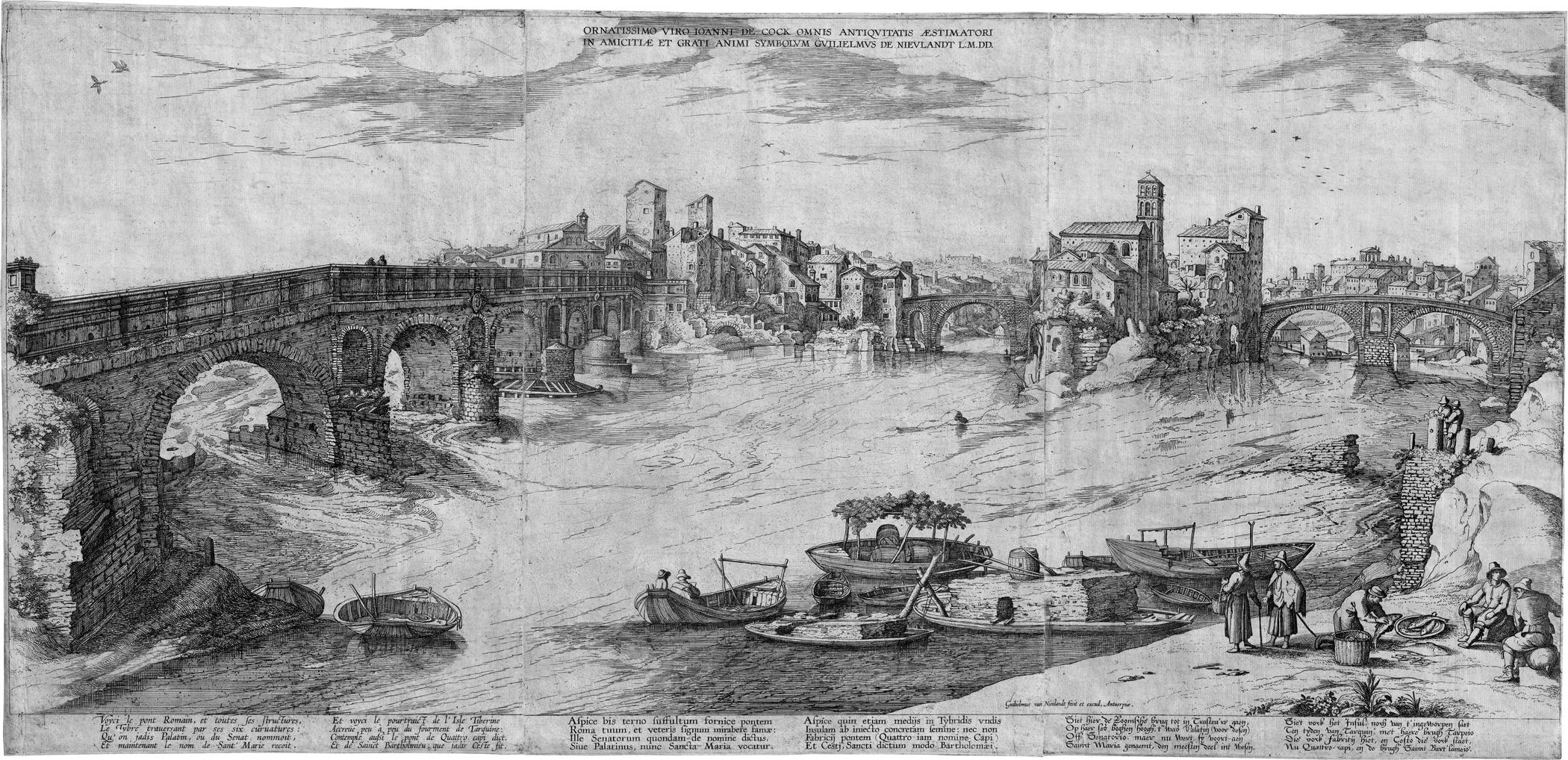Loading the page ...
Willem van Nieulandt the Younger
(1584 Antwerp – 1635 Amsterdam)
Grand View of Rome with Tiber Island and Pons Aemilius. Etching from three plates. 41.2 x 87.2 cm. Hollstein 9a. Watermark: Countermark.
This extremely impressive etching printed from three plates affording a wide-ranging view of the River Tiber and Tiber Island in Rome, which was made by the Antwerp painter, draughtsman and etcher, Willem van Nieulandt the Younger, also known as Terranova, immediately stands out for its remarkable format and fascinating spatial effect. Captured in the scene is one of the most magical parts of the Eternal City which has lost none of its fascination even today. Nieulandt provides a panoramic view of the surroundings of the Isola Tiberina as he perceived them during his sojourn in Rome (approx. 1599 to 1604). On the left in a greatly foreshortened perspective is the Pons Aemilius, better known as the Ponte Rotto. The ancient stone bridge resting on six piers first suffered severe damage during heavy flooding on the River Tiber in 1557 when two arches were swept away by the torrent. It was rebuilt in the following years but did not remain intact for long, renewed flooding in 1598 destroying the entire eastern part of the structure. All that remains today of the former Pons Aemilius is a solitary arch in the middle of the river.
Interestingly, Nieulandt’s view shows it in its entirety. For his reproduction of the ancient bridge he may well have resorted to drawings made by his uncle Willem van Nieulandt the Elder (d. 1626 in Rome) who was also resident in Rome at the time. The right of the image offers a view of the picturesque Tiber Island with the Church of San Bartolomeo all’Isola and the two ancient bridges, Pons Cestius und Pons Fabricius, which were erected in the first century B.C. The artist pays very close attention to the genre-like detail. In the foreground fishermen are sorting their catch, while the effectively foreshortened boats enhance the spatial effect and give the evocative scene added local colour. The swirling waters of the River Tiber rush beneath the Ponte Rotto and, having passed it, flow more gently past either side of Tiber Island. One delightful detail is of an artist – probably Nieulandt himself – sat in a rowing boat drawing the panoramic scene.
The lower margin of the etching contains two four-line handwritten texts in French, Latin and Dutch. They comprise a topographical description of the scene and a reference to the fact that the print was also intended for customers from other countries. As Nieulandt notes on the sheet, it was he himself who first published this prestigious work in Antwerp. Having spent some time in the studio run by Jacob Savery in Amsterdam, which was followed by a lengthy stay in Rome as an assistant to Paul Bril, the artist returned to his native Antwerp in about 1605. He became a member of the local Guild of St. Luke and was granted the freedom of the city not long afterwards.
According to Willem Adriaan te Slaa, the Grand View of Rome is in all probability one of van Nieulandt’s earliest printed works and represents his first attempt at using several plates for a single print. The dedication to Ioanni de Cock in the upper part of the picture is almost certainly a reference to the landscape painter, Jan de Cock (before 1591–1625/26 Antwerp). Van Nieulandt’s astonishing work is of special significance not just because of its topographical, cultural and historical relevance, but also – and in particular – in view of its exquisite rarity. Hollstein was aware of only one impression of the etching – in the British Museum in London. In 1992 the Rijksmuseum in Amsterdam also managed to acquire an impression.
A very fine, contrasting and even impression with traces of thread margins around the platemark. Minor ageing and traces of handling, otherwise in excellent condition.
Contact us for further information